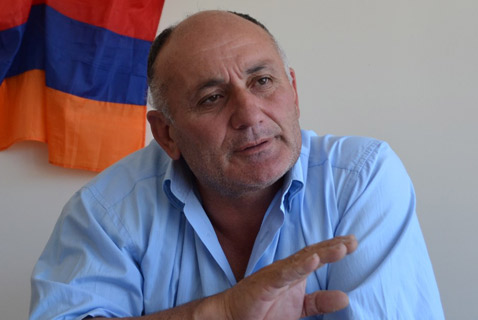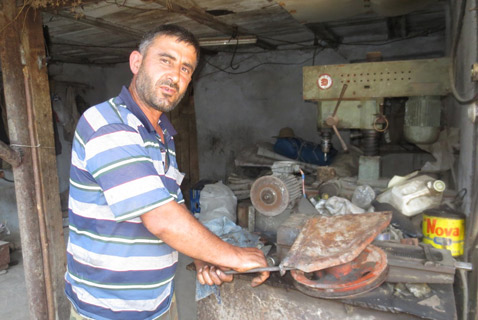
Syunik’s Kornidzor Village: Once Fertile Fields Lie Fallow
Mariam Matevosyan
Residents of Kornidzor, a village of some 1,300 souls in Armenia’s southern Syunik Province, say they had bountiful fields in the Soviet era and that agriculture was their main source of income.
Today, they lament the fact that most of their fields remain uncultivated and overgrown.
 Community head Arkadya Khachatryan says that the village used to supply the entire are with vegetables. Now, he says, produce amounts have fallen, partly due to the fact that it cannot be sold. Most of the produce is sold in neighboring Artsakh.
Community head Arkadya Khachatryan says that the village used to supply the entire are with vegetables. Now, he says, produce amounts have fallen, partly due to the fact that it cannot be sold. Most of the produce is sold in neighboring Artsakh.
1,043 hectares of the community’s 1,224 hectares of cultivable land is in private hands. The rest is leased. Wheat, barley, potatoes, and recently peas and chickpeas, are the main crops. A fledgling hothouse sector has always started.
50% of the community’s land receives water via an irrigation network built in the 1970s. To date, it hasn’t been upgraded. Khachatryan says that this has lead to significant water wastage.
Resident Vitaly Bedjanyan says that cultivating the land is not profitable.
“We receive 20,000 drams in revenue for each hectare ploughed. But we have to spend an equal amount,” Bedjanyan complains, adding that they lived better during the Artsakh War years.
“We fought but were also rich. The land was fertile. It’s not just electricity rates that will go up. It’ll affect bread and other prices,” he says.
 Ivan Poghosyan is one of the village combine operators and says that working the land is a losing situation.
Ivan Poghosyan is one of the village combine operators and says that working the land is a losing situation.
“All the seeds they bring have infected the fields. We are barely able to spray the fields with chemicals to treat them,” says Poghosyan, adding that his combine is thirty years-old.
Poghosyan charges 10,000 drams for every hectare of land tilled. In the busy season he says he tills 3-4 hectares per day.
Community head Khachatryan says that the village might have a chance to restore agriculture to its former prominence if the roads were fixed and the irrigation water supply guaranteed.
While the cost of everything else in Armenia is going up, agricultural produce seems to be unaffected.
In 2002, one kilo of wheat cost 180 drams. Today one kilo goes for 110 drams. Milk prices have also fallen. With the devaluation of the Armenian Dram, in conditions of overall inflation, the opposite tendency is prevalent.
Khachatryan says that the demand for government handouts of diesel fuel and fertilizer to rural communities has also fallen from year to year.
In 2014, Kornidzor received 120 liters of diesel. This year - not one gram. The village received 140 tons of fertilizer last year. This year the demand has been 95 tons.
“The government says that issues subsidies and that the cost of twenty liters of diesel fuel has been pegged at 7,000 drams. This year, however, private operators supplied diesel at 6,500 drams. Naturally, villagers went for the cheaper diesel,” Khachatryan says.
Video: Anahit Baghdasaryan
 Videos
Videos Photos
Photos




Comments (1)
Write a comment